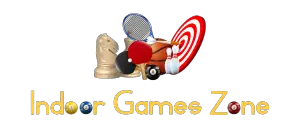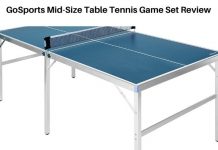Connect Four may be the first game many of us learned as children. And it’s very easy to see why. Plenty of kids can count to four before they’re even two years old.
It’s easy to physically drop checkers in to the board (compare that to a four year old trying to hold their cards while playing Go Fish). And what kid doesn’t love to watch the board being cleared (while every parent secretly or not-so-secretly hates all the noise). So since it’s the kind of game that you can learn so quickly and so young, who would ever think that you need a Connect Four strategy?
Well, let’s think about it. Do you win every time you play? Once your kid gets to be around age six it’s kind of a crapshoot as to whether you can consistently win the game. It shouldn’t be that hard to get four checkers in a row, but having a strategy to make sure that you can do that consistently isn’t as easy. There I go again talking about having a strategy for a children’s game.
I absolutely never had a consistent Connect Four strategy for when I played the game. I never thought there was all that much strategy to it honestly. “Get four checkers in a row” seemed like enough of a strategy going in to the game. And I certainly never took it seriously enough to think I needed to worry about winning every time.
Then I got older and game nights started getting more competitive. I started needing to win at everything. So it quickly became time to form a strategy. My kids loved helping me form this strategy because it meant getting to play many, many rounds of the game. And the kids love nothing more than getting to play board games all day with dear ol’ dad.
And now, you are the beneficiary of those many hours of my time. Keep reading to find all the Connect Four strategy that you never thought you’d need.
Table of Contents
Why I Love Connect Four
Besides the noise when you clear the board (I know I’m harping on that, but seriously all of that sound is terrible), what’s not to love? It’s the first game I taught my kids to play, and I’ve spent a lot of time playing with them and have a lot of great memories of spending time playing this game with them.

It’s easy. If your kid wakes you up at 6am wanting to play a game? Get out Connect Four, buddy, because that’s all I can mentally handle. You’re mentally exhausted after a long week of work but it’s Friday Night Game Night and you need to bring something for everyone to play? Connect Four shouldn’t be all that taxing, so bring it along.
Even thinking about all of the tips you’re going to read, it’s not a complicated game and you should be able to win no matter your mental state.
It’s also a great game to play at a bar because of the lack of complexity. I don’t know how things work where you’re from, but in my city nearly every bar has two games – giant Jenga, and Connect Four (also sometimes giant). Some bars have more games than that, but almost every bar has at least those two. There’s a reason for that.
Every drunk uncle or inebriated college kid can still play Connect Four. They may not always beat the sober-ish people at the bar, but at least they can still play.
If a game can be just as entertaining to three year olds as inebriated 30 year olds, and both of those groups can play it pretty well, then it’s probably a pretty great game.
Tips For Building Your Connect Four Strategy
How, you’re probably saying to yourself, am I going to write an entire article about Connect Four strategy? There can’t be that much to say about a simple game. Well, there’s more to the strategy for this game than you would think.
This isn’t the type of game that you can absentmindedly play while watching a movie. At least not if you expect to win. You have to pay attention, think, and be preparing your moves in advance. Honestly it’s like chess that way. A much simpler version of chess that preschoolers can learn, but still a game that requires some thought to win.
Consider Reading: Phase 10 Strategies
Stick with me and you’ll pick up some strategies that you may already be using without realizing it. And hopefully you’ll pick up some new ones that you’ll be putting in to your strategy right away.
1. Play The Middle
I’m guessing that you already do this. Unless you the type that starts near the sides just to be different and throw your opponent off of their game. But that never really should faze your opponent – it really should just make them laugh and start thinking about their victory before the game has really started. Most people start in (or near) the middle. But have you ever thought through why that makes sense?
Let’s think through the strategy here. If you start on one of the sides, or even near the side, then you really only have two directions to go. You’ll have to move toward the middle of the board, or go vertical. You become very easy to block, and then that first piece that you dropped becomes a wasted piece. If you start in the middle you can go vertical or to either side. You can even start trying to build out some diagonals. It becomes harder to block you without your opponent having to waste too many pieces.
You also should look at this mathematically. A Connect Four board has seven columns. So unless you go exactly vertical to win (which is rare, in my experience, since it’s the easiest for your opponent to see and block), you’ll have to have a piece in the middle column to win. If you’ve spent all of your time putting pieces down the sides and haven’t made an effort to control the middle column, you’re going to have a very hard time building a win.
From a purely math-based strategy perspective, this is the most important piece of Connect Four strategy that I can give you.
2. Be Aggressive, B-E Aggressive
Any game of Connect Four is going to involve having to play at least a little defense and blocking your opponent from a win. But you really should be spending most of your time trying to play offense.
If you only worry about trying to block your opponent, without any thought to playing offense, you’ll eventually look at the board and realize that most of your checkers are spread randomly around the board. You won’t have made the connections necessary to get four checkers in a row. At best you’ll get a draw, and that’s no fun for anyone.
To avoid the terrible fate of a tie at best or a loss at worst, play offensively and aggressively. Make early connections between columns. This gives you many options for a victory. An aggressive player will often find that even if their opponent blocks a row that they were trying to make, they may have two or three more options (more on this later).
Consider Reading: Yahtzee Strategies To Maximize Your Points
It also puts your opponent on the defensive that that they’re the one looking at the board with a random distribution of checkers that they can’t connect.
Finally, and maybe most importantly, it frustrates your opponent mentally. If they’re constantly having to plan to block and can’t get to their offensive strategy because they’re constantly having to block you, they’ll likely start getting angry or frustrated. A frustrated opponent is an opponent who is more likely to make mistakes. And you’ll be right there ready to take advantage.
3. Anticipate your opponent’s moves
This is definitely the “mental chess” aspect of the game. You have to be able to anticipate what your opponent is trying to do. And then you’ll have to anticipate what their response to your move is going to be. This really shouldn’t be very hard. The board is small and most people telegraph what they’re trying to do.
They put their checkers in order from one end to the other when they are trying to make a run to win. You won’t usually have someone connect two different parts of the board with a piece in the middle of a run. So this means that you can anticipate what your opponent is trying to do and how they’re trying to win.
Thinking through your opponent’s moves and anticipating where they’re trying to go to win helps you in multiple ways. First, it helps you plan for a block. Sometimes you may have to put a piece or two down in advance for a block that makes sense.
But also, knowing where they’re going to go in advance can help you plan not only your defense, but your offense too. Sometimes the piece that you use to block your opponent can be used to set yourself up for a win.
Anticipating their moves also helps you cut them off early. If you can see their strategy in advance and block them before they even have two or three in a row, that will greatly increase your chance of victory. The more pieces they have in a row, the more options they’re giving themselves for victory (trust me, the entire next tip is all about having multiple options). Stop them early so that they can’t do this.
You can’t only be concentrating on your own moves if you hope to win. You have to be thinking ahead – not just of your own move, but your opponent’s moves, too.
4. Fork, Fork, Fork
There’s a strategy in chess called “forking”. What this means is using one of your pieces to attack two or more of your opponent’s pieces at the same time. Imagine that you’re playing chess and your queen is on d2. Your opponent has a rook on a4 and a knight on d5. This is a forking position. No matter which of your opponent’s pieces they try to protect, you can attack the other one.
Many of the best moves in the middle of a chess game involve a fork because it puts your opponent to a decision for their pieces. This can often reveal their strategy by showing you which pieces they value and which moves they’re prioritizing for the future.
Consider Reading: Basic Checkers Strategy
“That’s great buddy. I didn’t come here for chess talk. What does this have to do with Connect Four?”
Well, the same strategy can be used in Connect Four, in a manner of speaking. If your offense only leaves one way for you to get four in a row it becomes very easy for your opponent to block. It only takes one move, one single checker, to block you. If you give yourself multiple places to put a piece and still advance your strategy then you have a greater chance to win.
Example
Imagine that you have three checkers in a row right in the middle of the board on the 2nd row, and the bottom row is full. Well guess what? You just won the game. Oh, you only have three in a row in my example? Yes, that’s true. But no matter which direction that your opponent tries to block you, you can just go to the other side to win.
This is absolutely the most basic example of forking in Connect Four. There are many different examples, most of which involve multiple diagonals in different directions; however, the basic idea remains the same. Set yourself up to give yourself multiple different ways to win no matter how your opponent tries to block you.
5. Don’t get set up by your opponent by accident
You can’t get so distracted by your own tactics that you ignore what your opponent is doing. Your first thoughts when it’s your turn should be “What did my opponent just do?” and “What are they trying to accomplish?” If you can keep those questions in mind you can avoid falling in to an accidental trap.
I can’t tell you how many times I’ve seen someone so worried about getting their own Connect Four that they don’t realize the fact that they’re directly helping their opponent.
Consider Reading: How to Win at Monopoly Deal
Imagine dropping in your third checker in a row. You’re salivating, just waiting for your opponent to move so that you can drop in your fourth in a row to win. What you neglected to realize is that your opponent set you up. That third in a row that you dropped in is exactly what your opponent needed to get their fourth in a row and claim the victory.
You have to be constantly paying attention to what you’re doing. Be thinking a few moves in advance and make sure that your moves aren’t inadvertently helping your opponent. Don’t let your own Connect Four strategy get in the way and accidentally be used to help your opponent.
6. Shepherd your opponent
You can anticipate your opponent and think 5 moves ahead, just like I’ve suggested, but sometimes that isn’t enough. Sometimes in order for your strategy to work, you know that you need your opponent to make one or two very specific moves. If they make those moves, you win. If they don’t, you’ll have to re-plot your entire strategy.
So, make them make the moves you want. In Connect Four it’s almost easier to force your opponent in to a move than it is in any other game. So how do we do this?
Example
Imagine you have three checkers in a row diagonally. But there aren’t yet any checkers in the column where your fourth checker will eventually go. So you need your opponent to help you build up that column, because otherwise it’s going to take forever for you to do it by yourself. So, start building up that column. After you get two, or especially three, checkers in the column your opponent will have no choice but to block you, which helps you build up the column.
There are plenty of other ways that you can do this, and in many different configurations. I couldn’t even begin to list them all, but I think you get the idea. When you’re planning ahead, try to see if there are ways that you need to shepherd your opponent, and plan the moves necessary to do so.
7. Watch out for tricks
Think of this as the opposite of Tip #6. If you can think of ways for you to shepherd your opponent into making moves that you need them to make, then they can (and probably will) be doing the same thing to you. Avoiding falling for these tricks is critical to winning the game.
Practicing anticipating your opponents will help you with this in two ways. The first way is obvious. If you can think 3-4 moves ahead, you should be able to see that your opponent will need you to make a certain move. If you know in advance, you should be able to avoid falling for it.
Consider Reading: How to Score More Points in Boggle
The second way this will help you is a little less intuitive. If you can think 3-4 moves ahead and then your opponent does something completely unexpected, there’s a good chance they’re trying to set you up for something that you didn’t expect.
And that’s not as bad of a thing as you’d think initially! Because if you at least recognize that they’re doing something unexpected, then you’re still less likely to fall in to the trap. If you weren’t paying attention or couldn’t understand what your opponent should be doing then you’d fall for it every time.
The key is expecting that your opponent is trying to force you in to moves, figuring out why they’d want you to make that move, and then counter from there.
Connect Four Strategy Summary
That was way more than you thought it would be, wasn’t it? Once you see how many of these tips work together it becomes much easier to plan your strategy without having to think too hard.
Most importantly, you have to make an early play to control the middle column. It is very hard to win the game without having a piece in the middle column so making an early play here is essential to consistent victory.
You have to be the aggressor in the game. That applies even if you’re the second player to play. Being the person who is driving the action, as opposed to reacting to it, is going to lead you to many victories even if you forget the rest of these strategies.
After those two, the most important thing you can do is try to anticipate your opponent, as many moves ahead as you can. Anticipation will help you set up many of the more advanced strategies, such as forking. If you give yourself multiple ways to win at any given moment then your opponent can’t block you since you’ll always have another option for victory.
It should also help you shepherd your opponent into making the moves that you need them to make. You can’t always trust your opponent to make the moves you need by pure chance, sometimes you have to force it. This move has helped me win many a game.
Finally, don’t fall in to your opponent’s traps. You always have to be thinking about why they’re doing what they’re doing, and what they need you to do for it to succeed. Don’t make the moves that they need you to make. Of course, if you’re playing as aggressively as I suggest, your opponent shouldn’t have much chance to try to set you up anyways.
Put these tips to use and you should be counting to four every time. Good luck!
Hunter is a stay-at-home dad to two fantastic young boys. He is a proud nerd of all kinds – he is still the only person in the history of his high school to be on the varsity football team and computer programming team at the same time. He loves to talk to anyone who will listen about sports (mainly baseball and football – go Astros, Saints, and Longhorns!), video games (ask him about his Legend of Zelda Triforce tattoo), board games, and cross-stitching. He lives in Austin, Texas but is a proud Cajun originally from Baton Rouge, Louisiana.

![Stiga XTR Pro Review | 1,559+ Global Ratings (In-Depth Guide) [year] Stiga XTR Pro Review](https://indoorgameszone.com/wp-content/uploads/2021/08/Stiga-XTR-Pro-Review-218x150.jpg)






